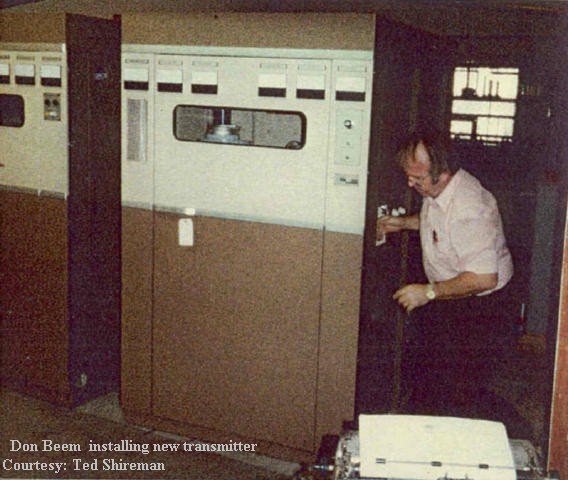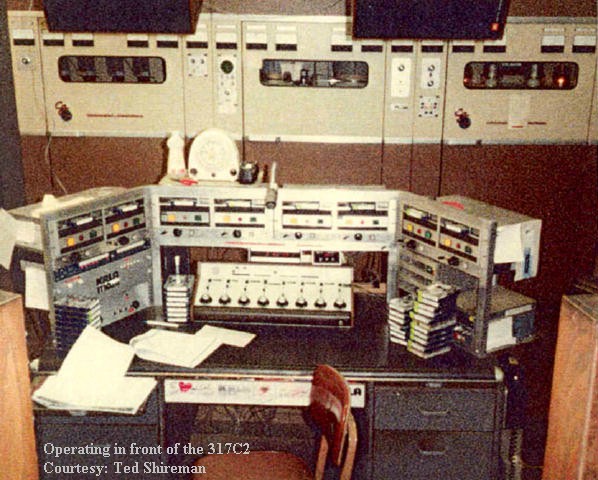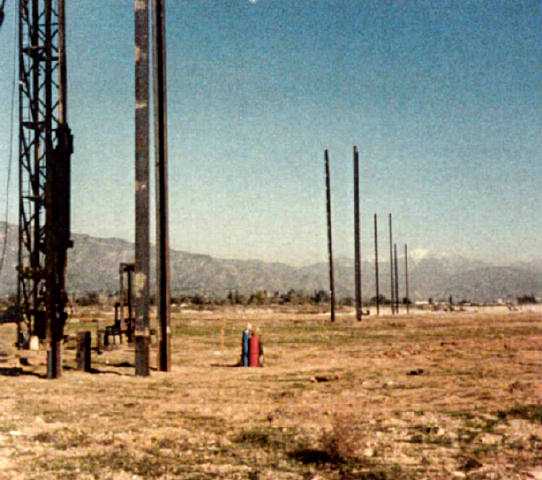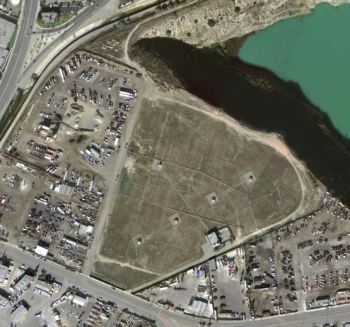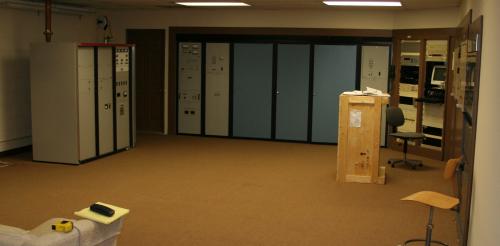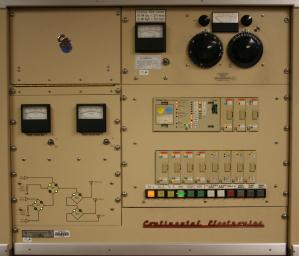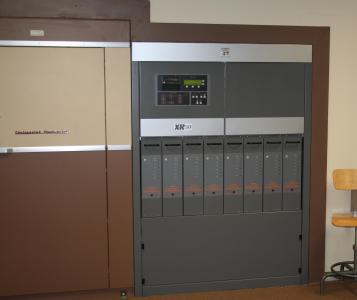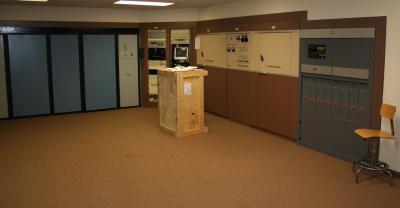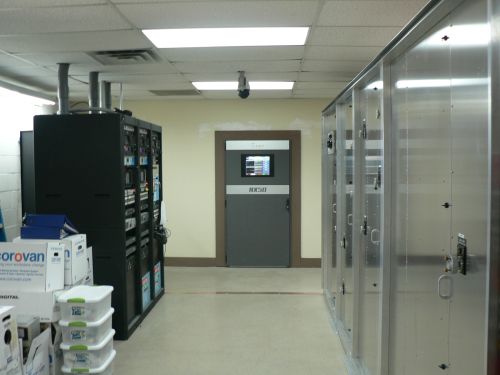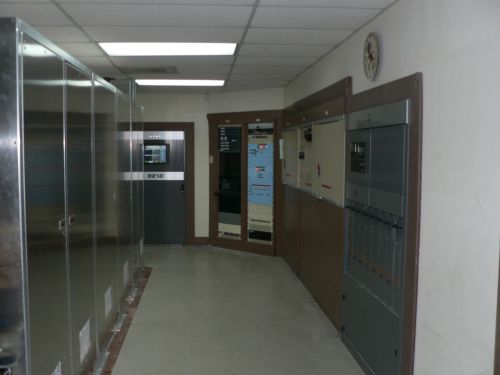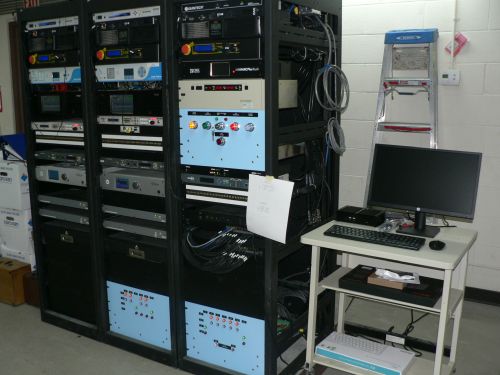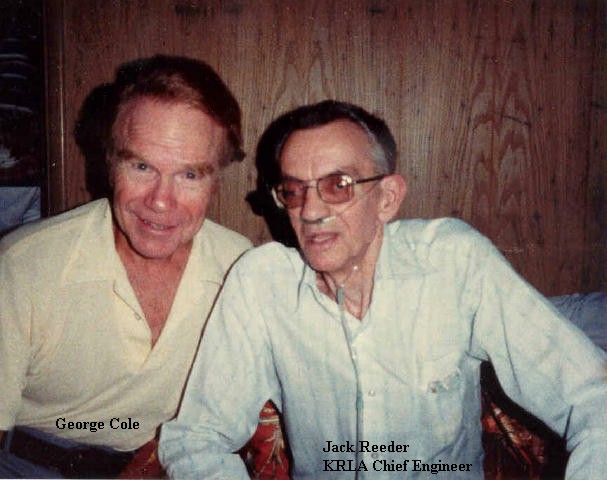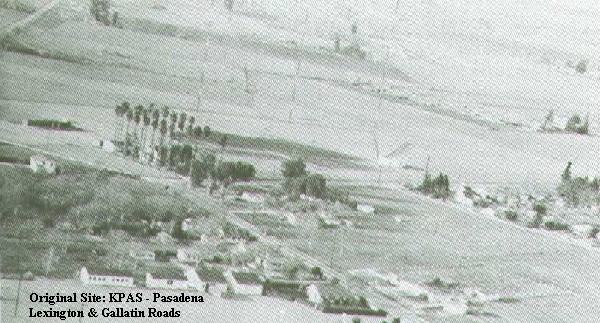 |
The original site at Lexington and Gallatin Roads, in El Monte, CA. |
| T.Q. Weatherall: The Burke family owned a newspaper ( Santa Ana Register?) in Santa Ana. They were the original licensee at KPAS. They owned another station in the area and had to divulge one of their stations.Loyal King worked for them and was married to their daughter, Mary Burke King. He formed a group of investors and bought KPAS [in 1945.] | |
|
Bill Earl shares this logo ... "I'm a KRLA
nut" from the El Monte
site. |
|
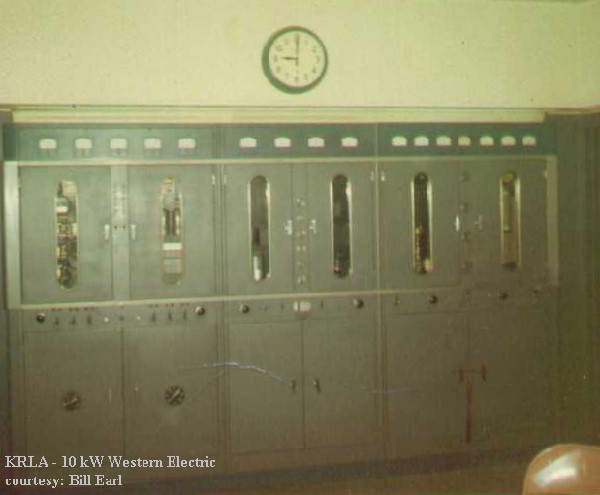 |
The original WE 10 kW water cooled transmitter.
Installed in 1941, this transmitter was retired in 1976. |
| Earl Arbuckle recalls this transmitter
was outfitted with a "TOJO" device. Should the Japanese ever
have invaded Southern California, the operator was instructed to pull a
lever which was to make the transmitter inoperative. It may sound silly,
but such was the paranoia after Pearl Harbor.
"The WE had 241B drivers and and 342A finals, in the unique Doherty amplifier configuration developed by Mr. Doherty at Western Electric/Bell Labs. There was a history of its development somewhere at the transmitter. It used a carrier tube, which under zero modulation and on negative peaks, produced all the carrier power. The "peak" tube produced the added power required on positive modulation peaks. Surprisingly, this arrangement was supposed to be more efficient than a plate modulated transmitter and did not require huge modulation transformers. The 342A had gone out of production about the time I was born, so we never could buy new tubes. Fortunately, California Tube Labs was able to rebuild these tubes many times, so we always had spares. One thing I remember about the WE was that the 15 kV HV transformer was a massive vertical affair affixed with a large metal nameplate proclaiming that it was filled with "Askarel," which was a rather nasty PCB transformer oil used in that era." Harvey Smith recalls: "The WE was quite fault tolerant, and since it was normaled into the dummy load when it was not on the air, all you had to do was fire it up 30 minutes ahead of changeover ( I actually found it would auto start using its own filament and plate delay relays just 3 minutes before need) and so when the changeover occurred, it actually was never turned off, but [essentially] switched hot. (A squelch circuit actually cut the RF for the milliseconds of the contactor operation.)"This is why the changeover could be made [almost] instantaneous[ly]; T.Q. always wondered just how much of an arc was made when the switch over was done this way, but you would loose 5 - 10 seconds cutting back to the 10 kW continental, because of walking distance between switches. "The WE used 845 and 872 type tubes (known as 8 series developed before and during the war). Fortunately I was not required to repair it without help from T. Q. As I considered it capable of killing me, and told T. Q. as much, and he did not disagree. I sensed that he knew it was a two man repair crew effort in all instances." Chris Hays remembers: "The mercury
vapor rectifiers had a 3 minute time delay. Because of this, the Western
Electric was always operated in "warm standby" with the
rectifier and driver filaments left on. In this configuration, the rig
could be brought up in a matter of seconds. The final tubes used direct
heated filaments and were about as "instant on" as a tube
could get." |
|
| Marvin Collins recalls: "I am reminded of an overnight shift at KRLA when I awakened from a nap and checked the operation of the WE transmitter as usual. All looked normal except the frequency monitor was off scale. The WE transmitter was on the air but what was the frequency? I never did find out. I put the Continental 10 kW on the air and the frequency monitor returned to normal. I soon found the heater for the crystal oven in the WE transmitter was not operating thus causing the off frequency operation. So, I opened the oscillator assembly and found the contacts had finally melted away after so many years of use. I was wondering how we would ever make a repair because parts were no longer available. Chuck Moore arrived to take over at the end of my shift and I showed him what I had found. Chuck asked if I had a dime. I did and so did he. We soldered our dimes in place to form new contacts for the heater thermostatic control contacts. As far as I know that fix worked until the day the WE transmitter was junked. I never did get my dime back." | |
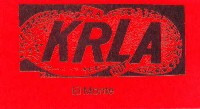
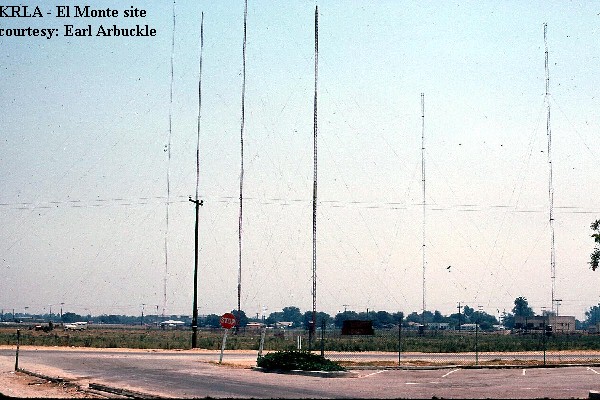 .
.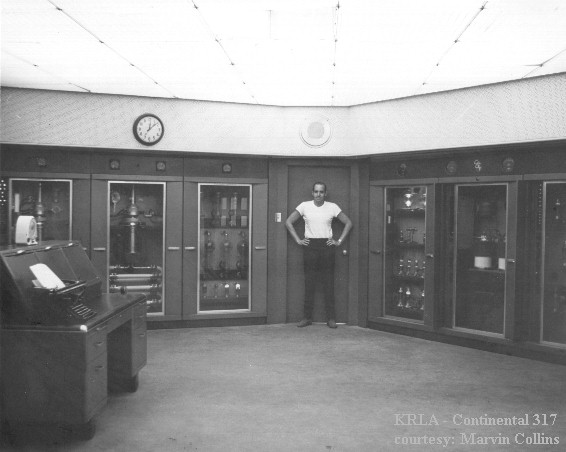
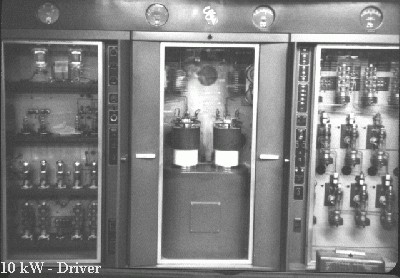
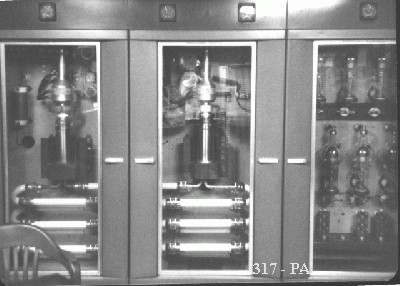
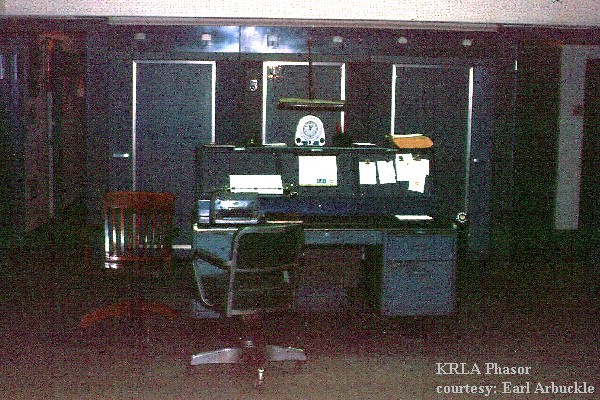
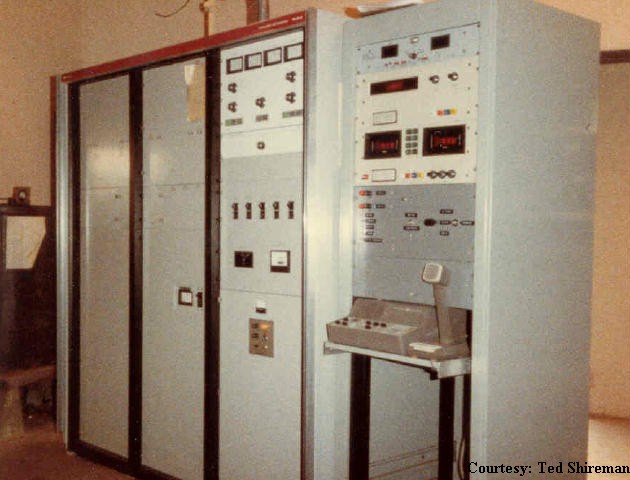
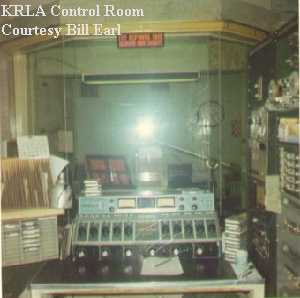
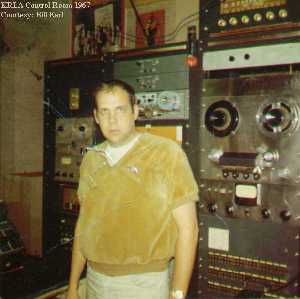
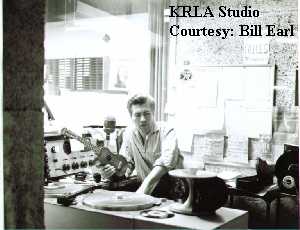
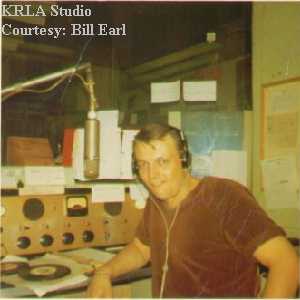
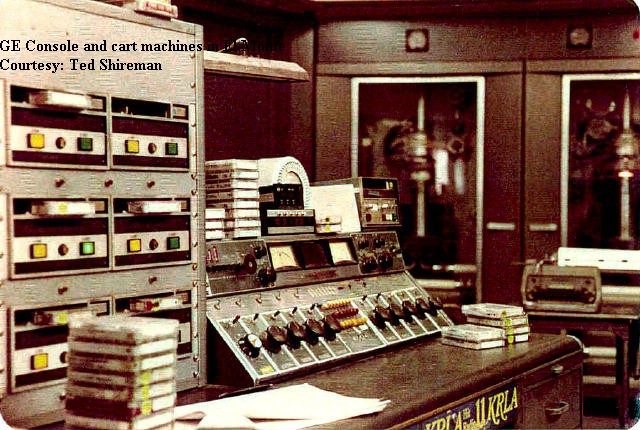
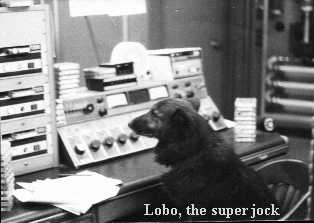 Chris
Hays remembers: "And here is one of the all night DJ's!!! Just
kidding of course! Hey, it got boring on the overnight shift. KRLA was
one of the last transmitter sites to be manned 24/7. This was mandated
by the FCC because the night antenna was on an STA and never worked as
it was supposed to due to literally dozens of high tension power line
towers near the site. When times got hard, a truly bizarre operation was
initiated, with the jocks at the Pasadena studios, and the carts played
from the transmitter. The picture shows 3 of the 6 ITC cart machines and
the GE console. The carts could be remote started from the studio, or
placed in a round-robin "cartamation" mode when there was not
a live DJ. There was even an old Schaffer audio clock for time checks!
All this because it was a union shop,and they had to have union
engineers present all the time. Well, they let go the studio guys, and
kept the transmitter guys (FCC mandate). Also, it would have been very
scary trying to remote control those old rigs!
Chris
Hays remembers: "And here is one of the all night DJ's!!! Just
kidding of course! Hey, it got boring on the overnight shift. KRLA was
one of the last transmitter sites to be manned 24/7. This was mandated
by the FCC because the night antenna was on an STA and never worked as
it was supposed to due to literally dozens of high tension power line
towers near the site. When times got hard, a truly bizarre operation was
initiated, with the jocks at the Pasadena studios, and the carts played
from the transmitter. The picture shows 3 of the 6 ITC cart machines and
the GE console. The carts could be remote started from the studio, or
placed in a round-robin "cartamation" mode when there was not
a live DJ. There was even an old Schaffer audio clock for time checks!
All this because it was a union shop,and they had to have union
engineers present all the time. Well, they let go the studio guys, and
kept the transmitter guys (FCC mandate). Also, it would have been very
scary trying to remote control those old rigs!